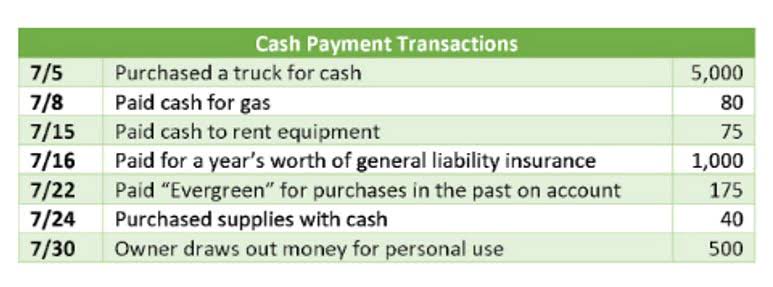
Just remember that if you are choosing to prepare internal-only documents that diverge from GAAP compliance, this may cause unnecessary confusion when preparing documents meant for external use. Functional expense reporting divides costs into program services and supporting activities (management, fundraising). Make sure the software builds in fund accounting for nonprofits, allowing you to categorize and track restricted and unrestricted funds. Also known as a balance sheet, the statement of financial position provides a snapshot of your organization’s assets, liabilities, and net assets at a specific point in time. Your nonprofit also needs to produce specialized financial reports, such as statements of activities, to show how funds are Online Bookkeeping used to support its mission.

Budgeting and Reporting
Search software that offers automated compliance reminders, including built-in alerts for crucial filing dates, such as IRS what are retained earnings Form 990 and state-specific reports. By separating financial duties and implementing specific controls, your organization safeguards assets and maintains transparency. Building a long-term strategic financial plan is key to setting your nonprofit up for future growth and handling unexpected expenses with confidence. Failing to closely track expenses leads to overspending, cash flow issues, or potential disruptions to your nonprofit operations. Many nonprofits must undergo annual audits, especially if they receive significant federal funding or meet certain state thresholds.
Minding the GAAP for nonprofits – resources for generally accepted accounting principles

Start by conducting a thorough review of current accounting practices against GAAP requirements. Conditional promises contain donor-imposed barriers that must be overcome before the organization has an unconditional right to receive funds. Organizations cannot recognize these as revenue until conditions are substantially met or explicitly waived by the donor. Generally speaking, there are two ways your organization can allocate expenses in its budget. The first method is based on the type of payment you’ll make to cover each intended cost, referred to as natural expense allocation.
Customizable reports
Our webinars are crafted to deliver exceptional value and insight to business professionals. To ensure we meet and exceed your expectations, we conduct thorough post live webinar surveys. Below, you’ll find genuine feedback from attendees, sharing their thoughts on the event and the speaker’s performance.

In addition to solid GAAP accounting skills, you’ll need an understanding that money coming into the organization is generally difficult to obtain, so it must be spent wisely. That means not only must you understand the nuances of nonprofit accounting vs. net-income-focused accounting, but you must be able to employ solid management accounting practices across the board. Separation of duties, internal audits, and checks and balances can prevent and detect fraud or financial mismanagement. Ideally, a nonprofit organization should have a protocol in place for external audits by independent auditors. These audits objectively assess their financial statements, compliance, and internal controls. Nonprofit organizations play a vital role in addressing social, environmental, and cultural issues, often relying on donations, grants, and funding to operate.
Understanding FASB Regulations for Nonprofits: Essential Guidelines
The distinct nature of nonprofit organizations – mission-driven rather than profit-driven, with unique funding sources and donor expectations – necessitates a specialized approach to financial statement presentation. Unlike for-profit entities, nonprofits must adhere to reporting standards that prioritize transparency, accountability, and alignment with their mission. The statement of financial position, comparable to a balance sheet, outlines the organization’s assets, liabilities, and net assets, offering a snapshot of financial health. The statement of activities details revenue and expenses, while the statement of cash flows highlights cash inflows and outflows, demonstrating liquidity and operational efficiency. Together, these statements offer a transparent perspective on the nonprofit’s fiscal management. Fund accounting is essential for nonprofits to remain mission-focused while maintaining financial integrity and transparency.

What if an Organization’s Receipts Are Below the Threshold?
- Following best practices in financial reporting not only ensures compliance but also strengthens the organization’s operations and impact.
- Fyle also recommends using software that makes all data related to your expenses–including receipts, card payments, approvals, and budgets, readily available in a digital audit trail.
- The world of nonprofits is driven by passion and purpose, with every organization striving to make a difference.
- These reviews highlight our commitment to continuous improvement and excellence in providing top-tier educational experiences.
- Section 501 (c)(3) organizations must also adhere to specific tax-filing requirements that are uniquely different from for-profit entities, as outlined in the Internal Revenue Code.
Stay in compliance and ensure timely, accurate reporting with this authoritative volume. A statement of functional expenses in nonprofit accounting is a financial GAAP for Nonprofits statement that shows an itemized list of expenses according to their purpose. It provides detailed information on where resources have been allocated within the organization. Some nonprofits use a modified accrual accounting system called “fund accounting,” which tracks income and expenses in separate accounts or funds representing their different revenue sources, like grants or donations. Nonprofit organizations play a vital role in society, driven by their mission to serve the community and make a positive impact. To effectively fulfill their purpose, nonprofit organizations must maintain accurate and transparent financial records.
Best practices in nonprofit accounting: A complete guide
Smith & Howard PC and Smith & Howard Advisory LLC, practice as an alternative practice structure in accordance with the AICPA Code of Professional Conduct and applicable law, regulations and professional standards. Smith & Howard Advisory, LLC and its subsidiary entities are not licensed CPA firms. The entities falling under the Smith & Howard brand are independently owned and are not liable for the services provided by any other entity providing services under the Smith & Howard brand. Our use of the terms “our firm” and “we” and “us” and terms of similar import, denote the alternative practice structure conducted by Smith & Howard PC and Smith & Howard Advisory LLC. To learn more about how these ASUs impact your organization’s accounting, we encourage you to reach out to our nonprofit accounting team. Thanks to the Inflation Reduction Act, tax-exempt organizations can now allocate Section 179D deductions that their construction projects qualify for to vendors.
